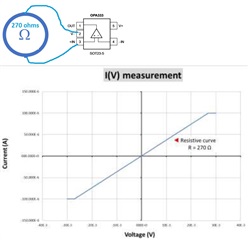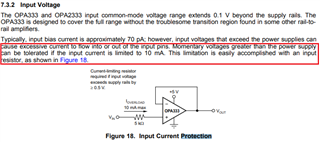We have a product based on OPA333AIDBVT. After working a certain time, the + input pin (pin 3) showed a failure mode where its impedance to GND is 270 ohms instead of high impedance. A deep analysis of the board showed that the problem is on the amplifier, not the PCB. We don't know the use conditions when the problem appeared.
We want to know if you can provide some informations about which conditions can generate such a failure.





